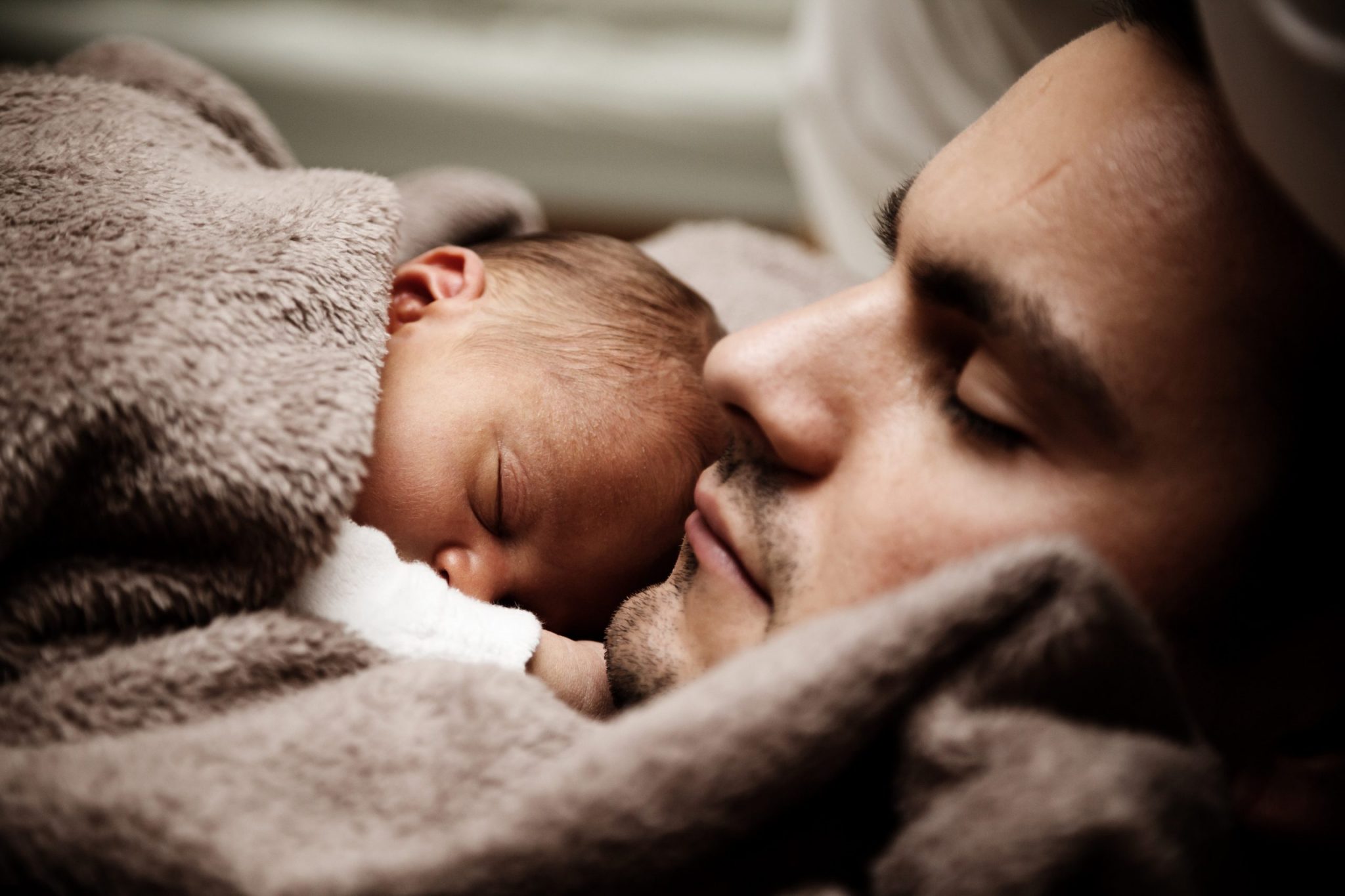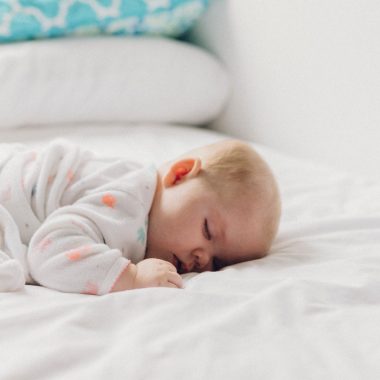Every parent eagerly anticipates that moment when their little one will peacefully drift off to sleep in their crib, independently and without needing any assistance. The question on every parent’s mind is when their baby will begin to self-soothe and embrace the journey to dreamland on their own.
Self-soothing is when a baby develops the ability to peacefully nod off to sleep or seamlessly slip back into slumber after waking, all achieved with minimal or no crying.
Newborns are not typically capable of self-soothing. Because their sleep patterns are irregular, and they need to feed frequently to grow and gain weight. However, establishing a sleep routine and healthy sleep habits begins from birth and the journey continues until the baby can sleep better on their own. There are a few ways you can help your baby fall asleep easily:
- Put the baby to bed at the same time each night in a quiet, dark room.
- Establish a bedtime routine, which may include a bath or a bedtime story.
- Be warm and affectionate at bedtime so that the baby feels safe.
- Do not let the baby nap for more than 3 hours during the daytime.
- Swaddle the baby until they can roll over.
- Hold the baby on their side or stomach.
- Swing or rock the baby.
- Use white noise.
When it comes to babies past the newborn stage, things start to change. According to some studies, it is possible for some babies to self-soothe. And some babies learn to self-soothe naturally as they get older. Because as your baby gets older and their sleep patterns become more regular, self-soothing becomes easier. But this is not a common occurrence. Usually parents or caregivers try to encourage this behavior through various techniques.
You might be anxious about when you can start with techniques that promote self-soothing. First of all, please keep in mind that it is usually normal for babies to wake up during sleep until the age of 12 months. Then, day by day, their sleep starts to improve.
By 6 months most infants are capable of sleeping 8 hours or more without feeding during the night. So it can be an ideal time to encourage them to self-soothe themselves to sleep and back to sleep if they wake up.
Experts point to the fact that it might be better to encourage self-soothing behaviors before separation anxiety begins around 8 to 9 months.
In this article you will read 8 tips and techniques to help your baby self-soothe to sleep. If your baby is past the newborn stage and still cries when you put them down, there are ways to help them self-soothe.
1. Meet your baby’s needs first
It’s crucial to remember that for a baby to self-soothe, their basic needs must be met. So, let’s not forget these fundamental needs of a baby. Your baby won’t be able to self-soothe if:
- Their diaper is wet or soiled.
- They are hungry or thirsty.
- They are overtired.
- They are too hot or too cold.
- There are causes of overstimulation in the room or in the house like noise, too much light, other children etc.
- They have gas or need to be burped.
- They are in need of gentle compassion from you.
After you’ve ruled out those issues, you can move on to the next steps. Remember that holding your baby in your arms and cuddling is an integral part of their growth and development and also qualifies as a basic need.
2. Establish a bedtime routine
Babies love routines. And there are many benefits to creating routines. You can create your own routine based on your baby’s needs and your lifestyle. Taking a bath, reading a book, singing a song may be in your routine.
For a baby, a sleep routine can provide their body with the signal that it’s time to relax and go to sleep. Moreover knowing what comes next makes your baby feel comfortable, safe and secure.
Always remember that consistency is key in helping your baby know how to respond to situations.
3. Establish regular sleeping times
Consistent sleep times might teach the body to expect sleep. That is why a bedtime routine is important as it trains your baby’s body and mind to drift off around a particular time.
Body rhythms can be trained to align with going to sleep at specific times. If your baby goes to bed at the same time each day, their body clock will get used to it. And they will start to feel sleepy right around naptime or bedtime.
- A schedule keeps your baby from getting overtired. Babies that are drowsy but not overstimulated are better at falling asleep on their own.
- Try to put your baby to bed at the same time every day.
- Don’t skip naps or keep your baby up late.
4. Ensure a calm, dark and cool sleep environment
A comfortable and safe environment is very important to being able to fall asleep and stay asleep.
When a child is put to sleep in an environment optimally designed for sleeping, they might go to sleep quickly without distractions. And also they are more likely to stay asleep without being triggered awake by noises, sweating or getting cold.
Moreover, to help prevent SIDS, a slightly cool environment is considered better than a warmer one.
READ MORE: Sudden Infant Death Syndrome: Causes, Risk Factors and Prevention
5. Wean them off feeding to sleep
It’s normal for young babies to fall asleep at the bottle or breast. But as your baby grows, they need to learn other ways to drift off. If your baby is going to sleep while breastfeeding or bottle feeding, this means that they are not learning to self-soothe.
You can avoid the feed-to-sleep method if you:
- Stop feeding if you see your baby getting sleepy
- Gently burp your baby to wake them up a little if they fall asleep during feeding
Once you decide to help your baby self-soothe themselves to sleep, then you should prepare to move feeding sessions to a slightly earlier part of the bedtime routine.
At the start this can lead to some crying as your baby most probably relates feeding with sleep. You can instead try to stand next to the crib and offer verbal assurances, rub their back as your baby learns to self-soothe, and move away from using feeding and full body contact as a sleeping aid.
6. Stay close but don’t pick them up
After you place your baby in their crib, don’t leave right away.
Experts recommend that if you give your baby some attention without holding them, then they can learn that being put down is not a bad thing.
- Talk to your baby.
- Gently put your hand on their belly.
- Rub their back.
- After a few minutes quietly leave the room.
READ MORE: Is It Okay To Let My Baby Cry It Out?
7. Offer a security object (if your child is old enough)
Experts share that a security/comfort object (or lovey) should only go in the crib when a baby is 12 months or older to avoid sudden infant death syndrome (SIDS).
But if your child is older, a soft toy or blanket that they’ve created an attachment to can offer an anchor to help with self-soothing and drifting back to sleep.
If your child isn’t yet old enough for a security object to be in their crib with them, a pacifier can help with the self-soothing process.
8. Take the pressure off
If you feel so much pressure in helping your baby self-soothe, then your baby cannot self-soothe. This rule is so simple. Babies sense anxiety. And anxiety makes everything more challenging.
First focus on helping yourself relax. It is your baby and your life. You are free to set the time for everything. So when you feel relaxed and ready to help your baby self-soothe, then start the process. You will find that your baby mirrors your emotional energy.
References: healthline.com, pathways.org, happiestbaby.com, medicalnewstoday.com, babycenter.com,webmed.com










